The process of strategy formation: positioning, formulation, and execution
According to the theory, the process of strategy formation consists of 3 consecutive steps:
- Position your organization clearly and unambiguously: know the competition, know who and what you are up against and sharply delineate your product-market combinations. Explore your strategy options.
- Formulate an organizational strategy: drawing up a growth strategy raises all sorts of crucial questions. For example, how much machinery, people and capital do you need if you want to equip the whole of the Netherlands with charging stations for electric cars?
- Start strategy execution: appoint a board member to manage the strategy implementation process.
There is nothing wrong with this sequence: it is logical and understandable. You can’t start implementing a strategy first if you haven’t even formulated one. But the process of crafting strategy development is a dynamic strategy process, where a top-down strategy and a bottom-up strategy can successfully alternate in practice. Learning what works and what doesn’t, adjusting and fine-tuning.
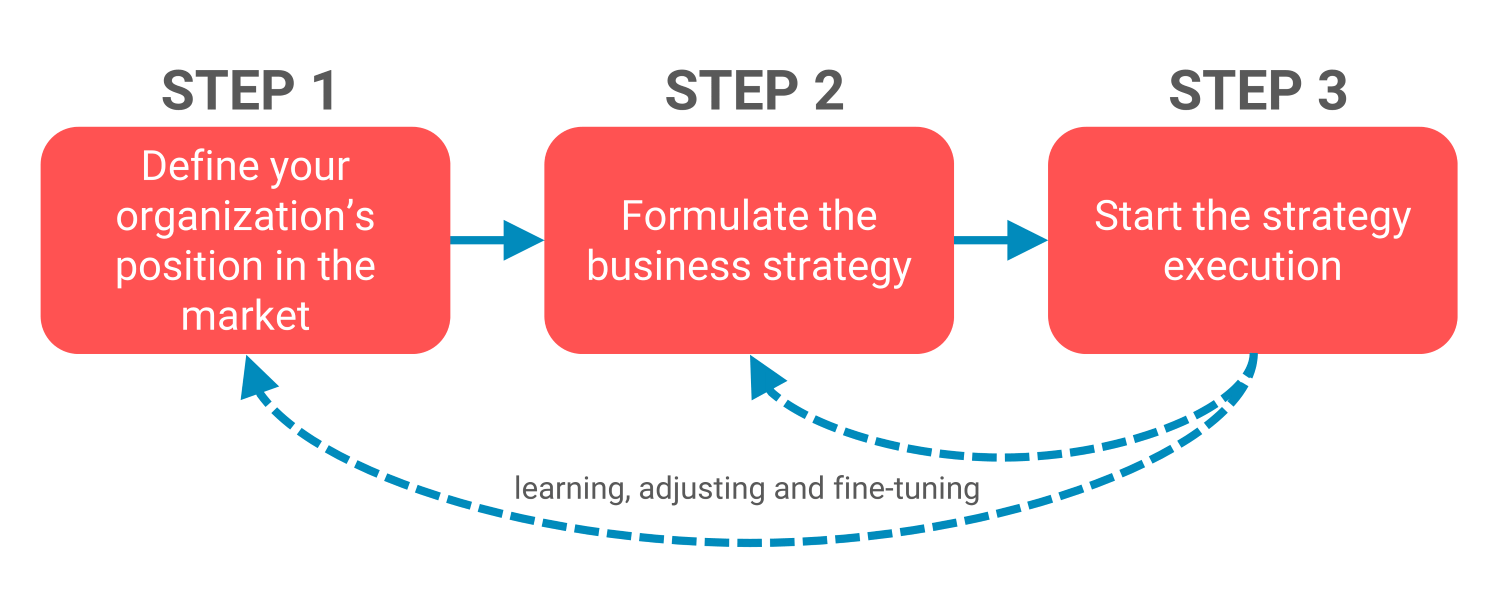 Figure 1: The strategy formation process: positioning, formulation and execution
Figure 1: The strategy formation process: positioning, formulation and execution
Mintzberg was not secretive about it: top managers who pat themselves on the back after they have been successful and proudly referred to the business strategy they had previously outlined, create a false reality. They grossly underestimate the essential contribution that people on the work floor usually make to the process of strategy definition and strategy development.
The usefulness of a SWOT analysis, strategy sessions and agile strategy
 Traditional entrepreneurs, such as KLM’s first president and aviation pioneer Albert Plesman, may have based their business strategies on gut feelings or the famous Fingerspitzengefühl, but nowadays there is much more to entrepreneurship than that. Without clear strategic objectives, solid business plans, sharp market and competition analyses and environmental impact assessments, you can’t get a foothold as an entrepreneur.
Traditional entrepreneurs, such as KLM’s first president and aviation pioneer Albert Plesman, may have based their business strategies on gut feelings or the famous Fingerspitzengefühl, but nowadays there is much more to entrepreneurship than that. Without clear strategic objectives, solid business plans, sharp market and competition analyses and environmental impact assessments, you can’t get a foothold as an entrepreneur.
A sustainable strategy for companies that have existed for some time cannot really be done without a periodic SWOT analysis, not to be confused with a SWOT strategy. After all, drawing up a SWOT is not a goal in itself, but a tool for mapping the strengths, weaknesses, opportunities and threats of the internal and external environment.
Make strategy and organization agile proof
Organizations that want to appear hip are using an agile strategy, although the shine is getting off it a bit. An agile strategy sometimes masks a lack of focus and can be costly with many iterations. Especially if you’re trying to blow with every wind. Consult our strategy consultants for the latest developments. In any case, Passionned Group believes in a strategy-driven approach and regularly organizes strategy sessions for clients.
Strategy meaning business: what does strategy mean?
The real meaning of strategy emerges when employees can contribute to the business strategy every day. A company’s strategy sets the course for the future: how to get to the jointly determined final destination as quickly as possible. In the word “how” lies the core of the organizational strategy meaning: in-depth knowledge is needed from the board and managers on how to realize the strategy goals. They need to know exactly which knobs to turn: from marketing to HR, from innovation to IT and from finance to quality management. And, of course, they must also be able to explain this in great detail and get employees enthusiastic about strategy change. That is exactly what gives your business strategy meaning.
The Data Science book for Decision Makers & Data Professionals This brand-new Data Science book (2021) covers every essential organizational and technical facet of (big) Data Science, AI, and machine learning. Learn how to build an intelligent, data-driven organization using the many examples and applications of data science and algorithms in this book. By reading this book you can learn how to optimize your company processes while aligning it with your KPIs and therefore creating a suitable strategy.
This brand-new Data Science book (2021) covers every essential organizational and technical facet of (big) Data Science, AI, and machine learning. Learn how to build an intelligent, data-driven organization using the many examples and applications of data science and algorithms in this book. By reading this book you can learn how to optimize your company processes while aligning it with your KPIs and therefore creating a suitable strategy.
What is a corporate strategy? What is strategy?
Strategy is not only about goals, but also about the conditions within which you can operate as an organization to achieve those goals. Think, for example, of laws and regulations regarding CO2 emissions or ethical frameworks for applying algorithms. This is how we arrive at a strategy definition:
Strategy begins where tactics fall short
This still doesn’t say anything about the “difference strategy and tactics”, but it does make it clear that strategy overrules tactics. And what is a corporate strategy? A company’s strategy consists of a set of critical processes that drive its daily revenue model.
So, your business strategy is actually a reflection of your business model.
Social significance strategy: example of a strategy
An organizational strategy is not separate from reality, but also has social significance and relevance. For example, what is a critical process in a hospital? That the OR has an optimal utilization. Not too high, because then patients are left lying in the hallway and you have to postpone operations. Not too low, because that costs money when patients evidently stay away. To figure out the perfect balance, you need to know exactly how to regulate the flow of patients in and out over time. Knowledge, knowledge, and more knowledge. We can’t stress it enough. Market and product knowledge, knowledge of your processes, your people, suppliers, and so on. Knowledge promotes strategy formation and is at the heart of the answer to the question “what is business strategy”. Don’t limit yourself and start accelerating strategy by increasing knowledge about the critical processes using, for example, data analytics. And start measuring and visualizing organizational strategy with dashboards.
The positioning strategy: company strategy starts with delineation
Making the first step of a business strategy is always a tricky business. For many specialized strategy companies, it is right up their alley: they often advise mainly to stick to what you are good at and get better and better at it. The old adage of “cobbler stick to your last” applies. But the options for your strategy are there for a reason. You can also reserve space to experiment and make excursions: look for the hole in the market. Occasionally take a trip into the blue ocean. And that is a delicate balance that management must find in the positioning of the company and particularly in the process of strategy formation. The following are the points you want to address when creating your company’s growth strategy:
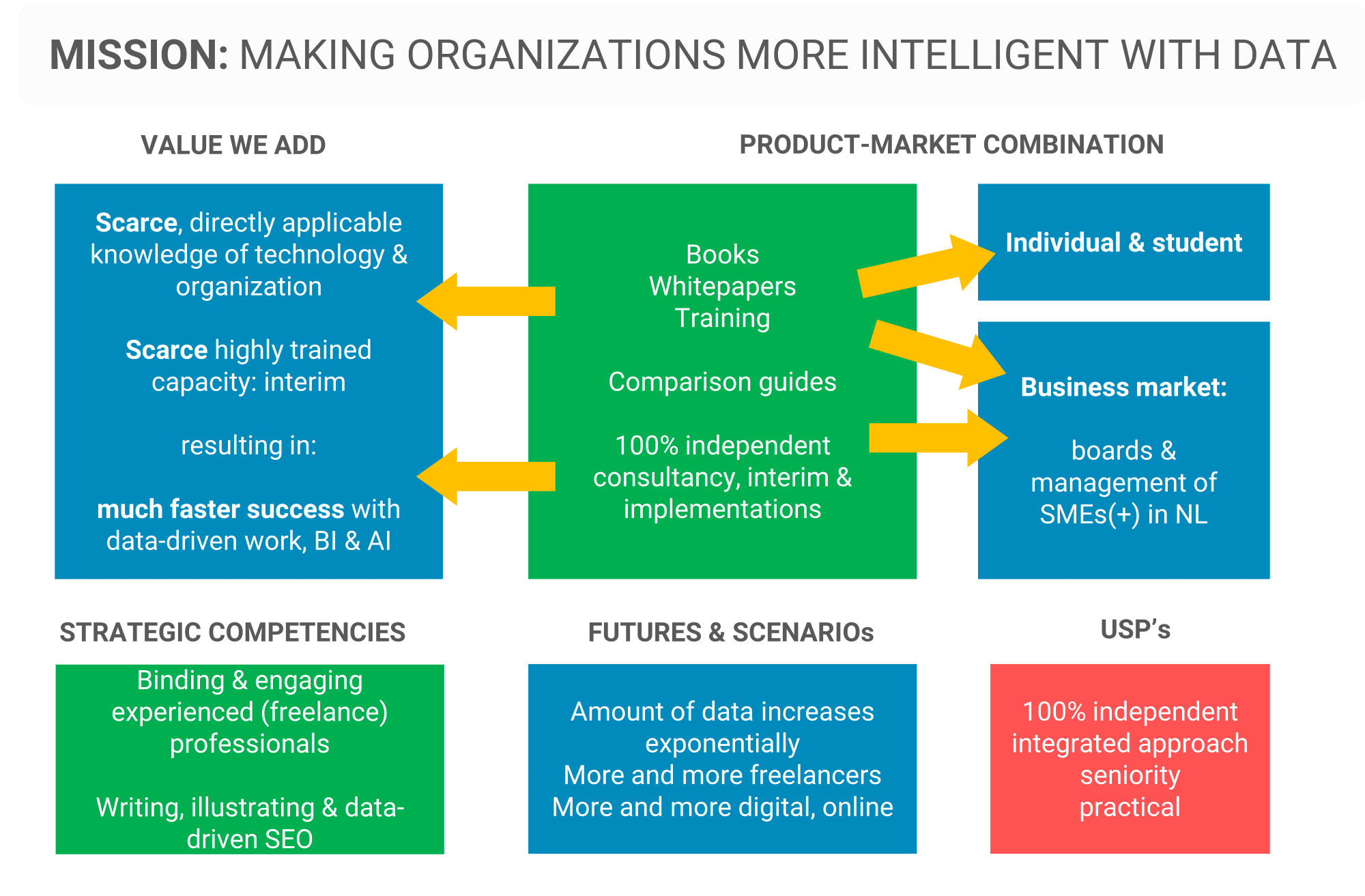 Figure 2: An example of a mission vision strategy model from Passionned Group. Of course, we don’t give away all our strategy secrets, hence the model doesn’t contain all the details.
Figure 2: An example of a mission vision strategy model from Passionned Group. Of course, we don’t give away all our strategy secrets, hence the model doesn’t contain all the details.
- Indicate the added value: what value do you add for your customers? For example, your products and/or services enable your customers to get from A to B by plane or electric car faster than before (or than the competition). Define the added value 100% lean from the very beginning, so you don’t get tangled up in a maze of administrative or controlling (unnecessary) processes later on. It is also important to realize that the added value of your company increasingly often lies in the service and ease of use and not necessarily in the product itself.
- Determine the product-market combinations: which (new) markets will you focus on with which existing or new products and services? Here, too, you will need to address the question of added value where necessary, as this can vary considerably per product-market combination.
- Define the required strategic competencies: given the previous answers, what strategic competencies will you need to have or acquire as a company? Ahold’s growth strategy, for example, has developed over the years into the strategic competency “being able to open a new store quickly”.
- Prepare for multiple futures: your positioning strategy must also take into account the future. With scenario analysis you explore the possible futures that could unfold and then make a choice based on probability and which scenarios best fit the strategic competencies belonging to your organization’s strategy.
- Develop a mission vision strategy model: in this document, also called vision mission strategy model, you lay down your mission and vision, and describe in outline your positioning strategies. Do that briefly and concisely and preferably on one A4 because you need to be able to explain it quickly. TIP: also, briefly mention in this strategy document the unique selling points (USPs) of your organization, the products and services. You can also use a business model canvas instead of a mission vision strategy model.
Now that you’ve done all this, the foundation of your strategy and associated organization is slowly taking shape, but as we hinted at earlier, the devil of an organization’s growth strategy is in the tail. The next section goes into the crucial step where you start to “define strategy” in detail.
How do you go about defining your strategy and formulating strategy?
 Defining a business strategy, developing a strategy or defining a growth strategy is much more far-reaching than you might initially think. You will have to formulate things sequentially. The correct order is mission, vision and only then strategy determination.
Defining a business strategy, developing a strategy or defining a growth strategy is much more far-reaching than you might initially think. You will have to formulate things sequentially. The correct order is mission, vision and only then strategy determination.
This exercise forces you to first ask a number of fundamental questions. Penetrating, sometimes even very personal questions that at first glance seem to have nothing to do with determining strategy or your organizational strategy.
- What are we on earth for?
- How do you stand in life?
- What are your personal motives?
- What do you want to achieve in life?
- What standards and values are important to you?
- But also: how do we as a company think about business and ethics?
- What is our commitment to sustainability?
- Do we consider prosperity more important than well-being?
The answers to all these questions determine to a substantial extent your mission and what your organizational strategy (company growth strategy) will ultimately look like. Even if you work for a large company where the business strategy has been more or less fixed for years, it certainly can’t hurt to regularly reflect on these “fundamentals”. The zeitgeist, technology, markets, business models and consumers change – sometimes very suddenly – and of course you don’t want to miss the boat.
Determine company strategy
How do you determine a strategy? Strategy determination is preceded by a mission statement and a vision document. The organizational strategy is fed by the mission and vision of the company. However, the concepts of mission, vision, core values and strategy determination are often confused in practice. We therefore briefly explain them using a practical example (strategy example).

A mission statement expresses the organization’s raison d’être as briefly as possible, preferably in one short sentence. It represents the foundation of your organization. McDonald’s, for example, considers it its mission to offer guests a spontaneous moment of happiness by offering fresh and fast food that makes them feel good. Core values that fit with this are quality, service, crispness, and value for money.
A vision indicates what an organization stands for. What do you aim for? McDonald’s, for example, strives for an inclusive, people-centered work environment where everyone can be themselves and develop to their full potential.
A business strategy is the elaboration of the vision document. A strategy indicates how do you want to realize the mission and vision? With what means, people, resources, finances, and data are you going to realize the mission and vision?
Determining a strategy or devising an entirely new strategy also requires a nimble and creative mind. The management of McDonald’s has shown over the years with its theme campaigns that it possesses such a mind. Originally, the motto was “Think global, act local.” Under pressure from the health and fitness trend, it became “Good Fast Food” and with “Good Food Fast” it again capitalized on the convenience trend. Today, “Always Open for Good Times” in combination with the ongoing sustainability program “Scale for Good” and the slogan “I’am loving it” for the adolescents, accurately reflects the current mission, core values, vision and business strategy. Financial results are already back to pre-Corona levels.
In short: changing a strategy gradually and adapting your mission in time to the spirit of the times pays off.
How do you describe a strategy?
After answering the above personal questions, you’re going to develop a business strategy, create a strategy, write strategy, or improve your existing business strategy. It doesn’t matter how you name it, as long as you answer a few key questions. In which markets do you want to dominate and what product-market combinations fit with that? What are you going to do and actually even more important is the question: what are you not going to do? Concerns such as Vendex and Philips used to have a wide range of activities and were forced to divest more and more parts or focus on only one branch, as Philips Healthcare still does today. And even that (developing a strategy for one product line) is difficult enough.
Describing a strategy in five steps
A solid business strategy contains five essential steps that can be summarized as follows:
- Determine the ambition level. What concrete objectives and results do you want to achieve with your business strategy? What is the social impact of your products and services? What “footprint” does your company leave behind? For example, to what extent are you willing to compensate for CO2 emissions?
- Determine the core values that you want to propagate to the market. These are sacred principles or golden rules of conduct that are essential to your company and business strategy. No one in the company should be allowed to tamper with these. For example, the core value “integrity” for a construction company or financial services provider means that you declare bribes, illegal work, and money laundering taboo.
- Describe the organizational strategy in operational terms. The organizational strategy must be in the minds of all employees – from the top to the shop floor. Strategy formation and strategic themes must be embedded in the daily workflow of employees. Make strategy an ongoing process.
- Determine how you will monitor the progress of organizational strategy. Define a set of SMART goals, critical success factors and KPIs and then plan the strategy according to a set of milestones to be achieved. Determine and monitor a growth strategy based in part on continuous improvement cycles (PDCA).
- Test your business strategy. Banks and insurers have now gained experience, through trial and error, with so-called stress tests. Especially in these times, testing your organizational strategy is no superfluous luxury. “Recalibrating strategy” should regularly be an agenda item at meetings of directors and supervisory directors.
Improve the company’s strategy? Describing a strategy sometimes requires a fresh pair of eyes. If you need help defining a strategy, drawing up a corporate strategy or sharpening it, contact one of our strategy consultants.
Defining strategy model
The management literature is full of strategy models, templates for strategy and business innovation, templates for visualizing your business strategy, and so on. Strategy models come in all shapes and sizes.
Perhaps the most imaginative strategizing model for a clear management strategy is the Blue Ocean strategy as described by Kim and Mauborgne. Hyper-competition only leads to a blood-red ocean of rivals fighting over an ever-shrinking profit margin. Based on a study of 150 companies, they advise organizations to discover or create a new, untapped market: the blue ocean. In their book, the authors explain how to achieve strategic value innovation. Stop competing in the red ocean and focus on the unexplored profitable territory of the blue ocean.
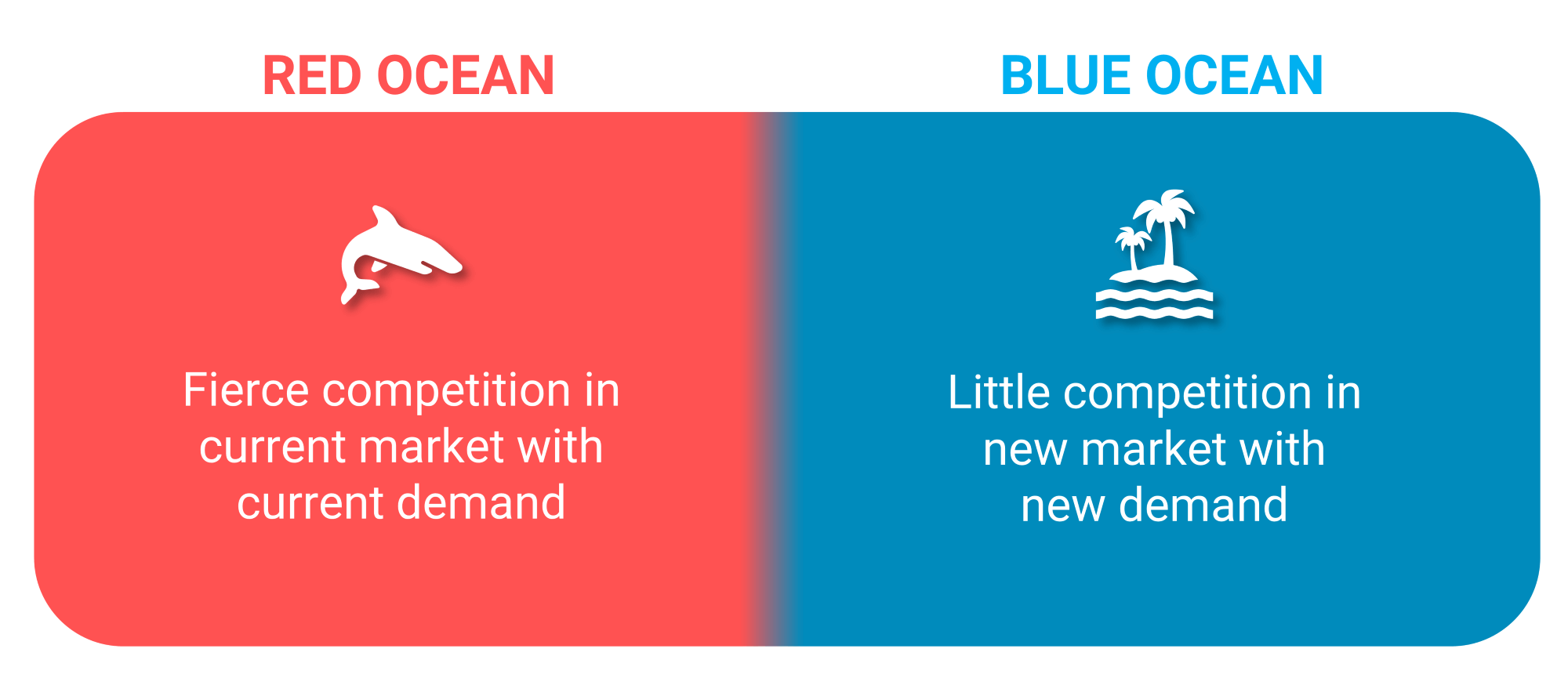 Figure 3: Choose a business strategy based on the principles of the Blue Ocean Strategy
Figure 3: Choose a business strategy based on the principles of the Blue Ocean Strategy
The popular Business Model Canvas by Osterwalder and Pigneur also offers a number of handles for a reinterpretation of your business strategy. According to them, this allows you to constructively challenge established business models and strategically examine the environment in which your own business model functions.
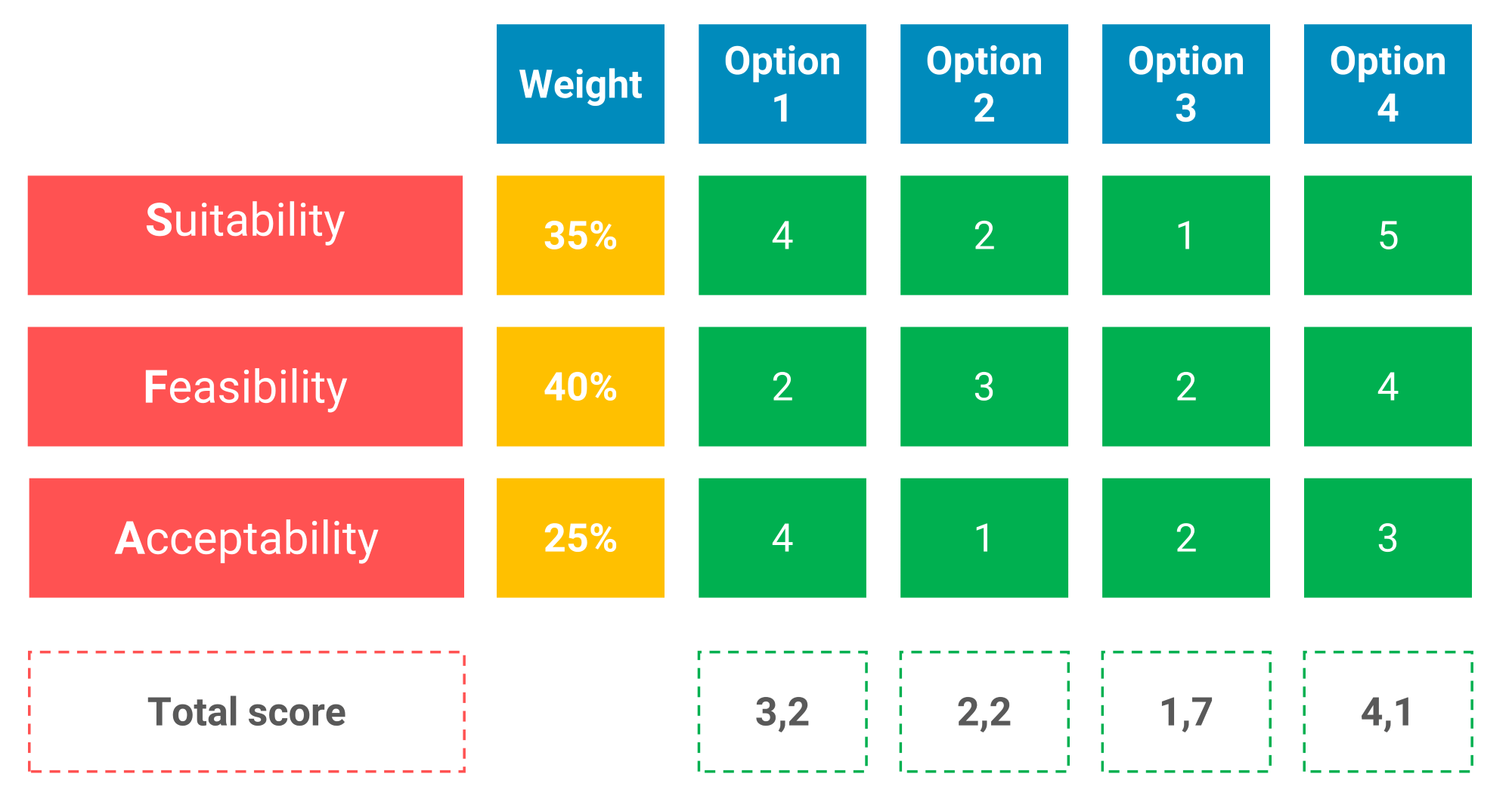 Figure 4: SFA Matrix for strategy development and assessment strategic choices (Johnson and Scholes)
Figure 4: SFA Matrix for strategy development and assessment strategic choices (Johnson and Scholes)
In addition to these two models, there are numerous other strategy models that all critically examine a company’s strategy from a different perspective (internal environment, external environment, growth and development). In no particular order, these include Porter’s five forces model (see below), Ansoff’s growth matrix, Treacy and Wiersema’s value strategies, McKinsey’s 7 S model, the Abell model, Johnson and Scholes’ SFA Matrix, and so on. The SFA Matrix, for example, tests your business strategy (options strategy) on three aspects: the appropriateness, the feasibility and the acceptance of your organizational strategy.
What is a company’s strategy in essence?
Are you looking for a model strategy assessment? Passionned Group’s strategy consultants have several decades of experience with strategy modeling, strategy formulation, strategy map creation and strategy execution. Join them in their search for the essence of your business strategy. Feel free to contact us for references.
Visualizing the strategy
Ideally you want to visualize your business strategy at a glance on a canvas, a template or a map. During a strategy session you can then easily start the discussion with your stakeholders. Graphic design agencies and creative designers respond to this with all kinds of templates on which you can draw to your heart’s content. But the most proven and most consistent and tight way to visualize your business strategy is still the strategy map by Kaplan & Norton.
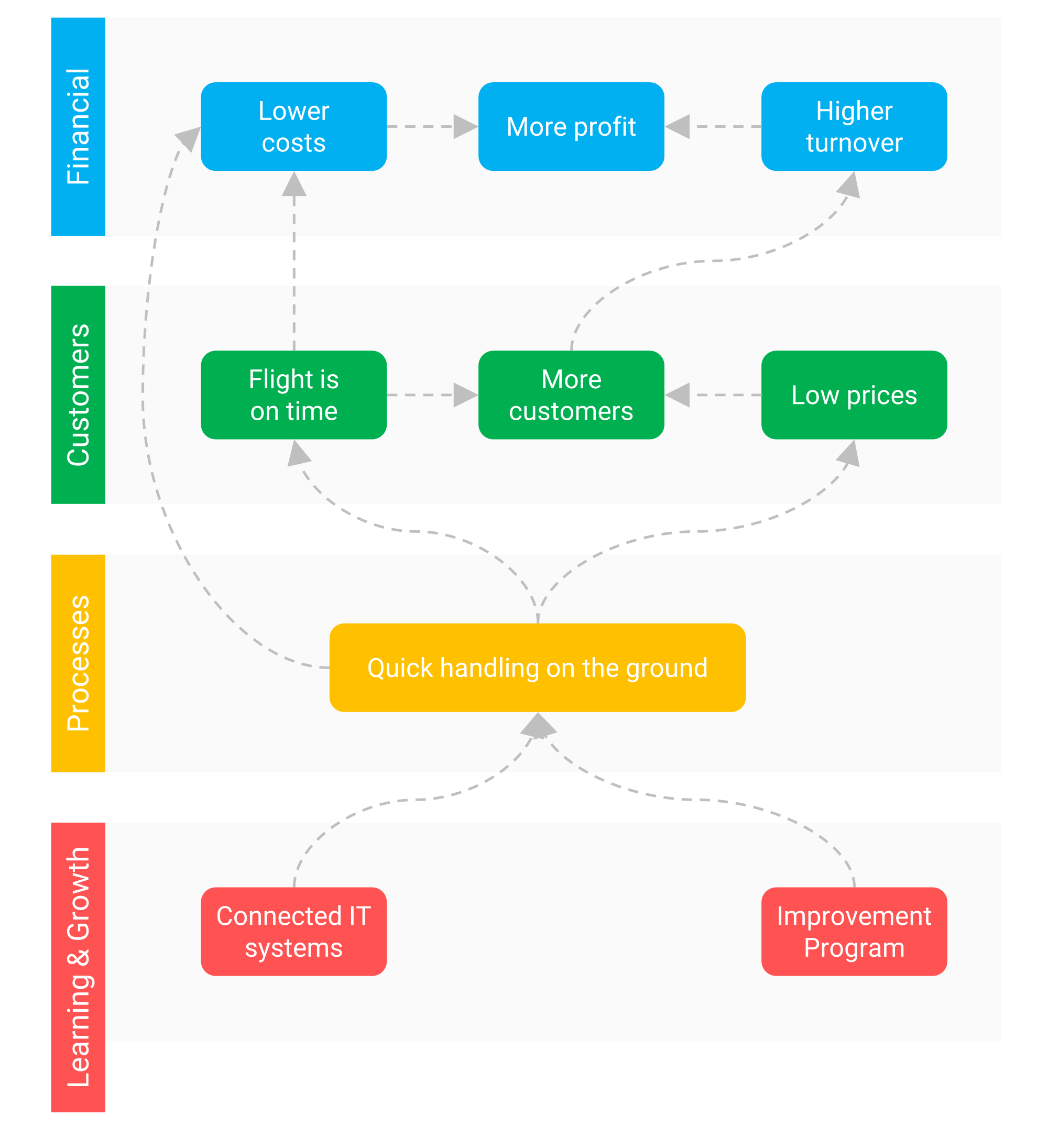 Figure 5: Strategy map of a low-cost airline.
Figure 5: Strategy map of a low-cost airline.
A good strategy map captures the strategic themes and cause-effect relationships. It shows the steps you need to take to realize the strategy. This makes it clear what value proposition the organization should offer to its customers. Engage one of our experienced strategy consultants and we promise you an inspiring strategy session in which your company strategy also becomes clear at a glance.
Strategy examples
After you have completed the phases of strategy definition and strategy formulation, a new challenge follows: how to translate your organizational strategy to the workplace. A company’s strategy is often a far cry from even the most dedicated employee. It therefore helps if you can summarize your strategy and strategy organization internally, but certainly also for the outside world, in one sentence or a few words.
Mission, vision and strategy
A mission vision strategy model is basically set up for the long term. Mission, vision and strategy is also conceptually the right order to tackle the strategy issue structurally. In practice you sometimes hear managers talk about the vision mission strategy, but everything really starts with a mission statement as it is officially called.
A mission vision strategy example: Unilever. This company uses its brands worldwide to carry out its mission: “to make sustainable living commonplace”. It also describes its vision in clear terms: “helping people look good, feel good and get more out of life”. The corporate strategy of the group is described in detail in The Unilever Compass. For example, the company is aiming for zero CO2 emissions by 2030 and global sales of €1 billion in plant-based meat and dairy alternatives by 2025-2027. The strategic compass is the successor to the Unilever Sustainable Living Plan (USLP) introduced a decade earlier. It illustrates that a business strategy should normally last at least ten to fifteen years.
Pay-off of a brand: examples of strategy directly from practice
The mission of an organization should also be translated into the pay-off of the brand. Think for example of Coolblue’s “Everything for a smile”. Another business strategy example comes from the automotive world: “BMW makes driving great”. The strategy business example of Pon Holdings, the glorious winner of the Dutch BI & Data Science Award 2021, also captures the imagination. “We move you to a better world.” Nothing more and nothing less. It is an ambitious strategic vision without embellishment.
Discuss a company’s strategy example in the group
During our strategy training courses, trainees can bring in their own organizational strategy example which is then discussed in class by the instructor and fellow trainees. Because the course participants come from different sectors, depending on the size of the group there are suddenly eight to ten different business strategy examples on the table that are discussed in complete confidentiality. As a student, you learn a lot from this. These positive experiences are also reflected in the reviews of our strategy courses.
What business strategy example would you like to contribute? What is a strategy example that inspires you? What association does the trite “example strategy company” evoke in you? The strategy consultants and faculty at Passionned Group are curious. Let us know.
Bottom-up strategy versus top-down strategy, or just a combo after all?
 The choice of the right global business strategy is quite tricky. From the ivory tower, the board of directors can come up with all kinds of ideas, but if there is no support on the work floor, your organizational strategy is still doomed to fail. Bottom-up strategy, top down strategy, top-down bottom-up strategy, top-down strategy, bottum-up [sic] strategy, just thinking about the correct spelling can give you the necessary headaches. And then you still have to weigh up the content and coordinate the strategy with all those involved. We can take the worry out of it and help you with that. Also read the article ‘Top-down & bottom up problems and solutions’.
The choice of the right global business strategy is quite tricky. From the ivory tower, the board of directors can come up with all kinds of ideas, but if there is no support on the work floor, your organizational strategy is still doomed to fail. Bottom-up strategy, top down strategy, top-down bottom-up strategy, top-down strategy, bottum-up [sic] strategy, just thinking about the correct spelling can give you the necessary headaches. And then you still have to weigh up the content and coordinate the strategy with all those involved. We can take the worry out of it and help you with that. Also read the article ‘Top-down & bottom up problems and solutions’.
Both strategies have their advantages and disadvantages. And as so often, the truth lies in the middle. A top-down strategy often gets bogged down in power politics: the people on the work floor soon feel passed over. A bottom-up strategy works exactly the other way. All sorts of wild ideas can also emerge on the shop floor that are at odds with the organizational strategy and policy. The management then says no and blocks the decision making. With a combined top-down bottom-up strategy you might achieve the most effect. Consult our strategy consultants for an objective opinion.
In addition to an overall long-term strategy, we can distinguish a number of specific strategies that we briefly explain below:
These days, it is not enough to choose one of the four specific strategies above. You have to be of “all trades” up to a certain level. Want to know exactly how that works? Then contact us here.
Smart strategy
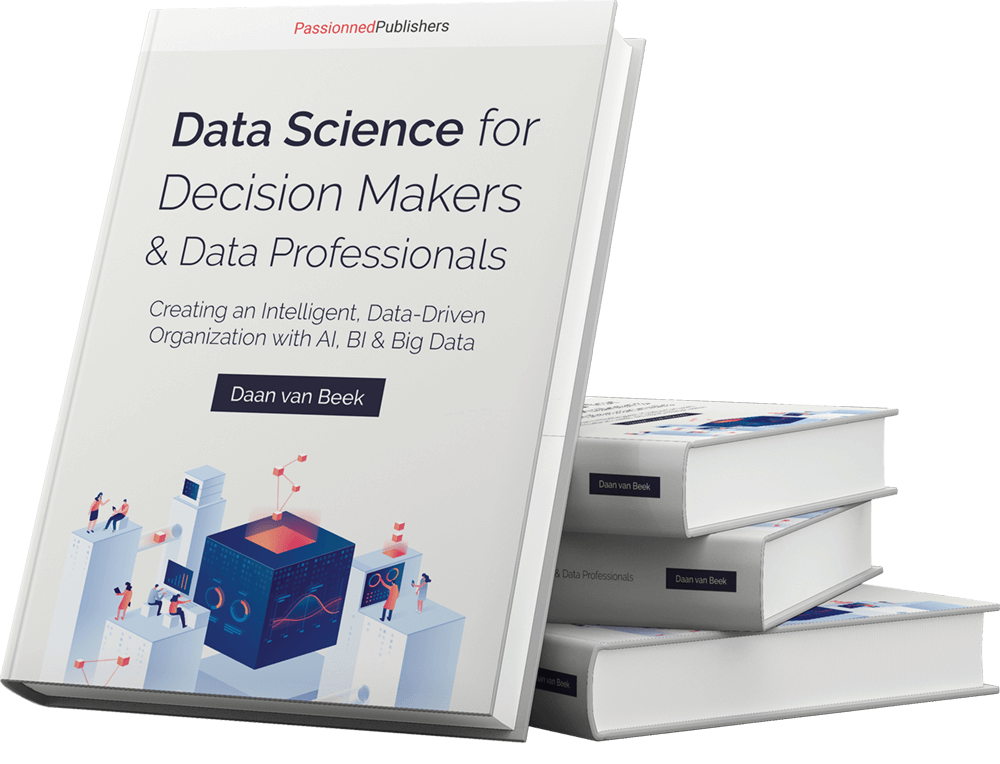 A smart or smart strategy that fits within the philosophy Passionned Group has been practicing for years is one that is especially intelligent and data-driven. For example, the “Data Science Book” (more than 25,000 copies sold) covers the so-called BI strategy and AI-first strategy. And the book “Datacratisch werken” is in Dutch but it is all about the improvement strategy, strategy execution and company strategy.
A smart or smart strategy that fits within the philosophy Passionned Group has been practicing for years is one that is especially intelligent and data-driven. For example, the “Data Science Book” (more than 25,000 copies sold) covers the so-called BI strategy and AI-first strategy. And the book “Datacratisch werken” is in Dutch but it is all about the improvement strategy, strategy execution and company strategy.
Do you need help with strategy execution, strategy acceleration or are you looking for professional guidance on the right implementation strategy, contact one or more of our experienced strategy consultants.
Mission vision strategy examples
A mission vision strategy model is basically set up for the long term. But research by McKinsey shows that the average life cycle of companies themselves is getting shorter. For example, in 1958 the average life cycle of companies listed in the Standard & Poor’s 500 was still 61 years. Today, that figure is less than 18 years. The researchers predict that by 2027, 75% of the companies currently listed on the U.S. S&P 500 will have disappeared by then through acquisitions, mergers, or bankruptcy. The turnover rate of companies listed on the Dutch AEX is also steadily declining.
TIP: Regularly adjust vision, mission, strategy, and your slogans in response to the spirit of the times and market sentiment, but don’t let yourself be led by the fads of the day. Volkswagen, for example, has used various slogans over the years to emphasize their business strategy such as “Das Auto,” “It’s not a car, it’s a Volkswagen,” and “Volkswagen, who else?” Ikea summarized its mission vision strategy model with slogans such as “Design your own life”, “Room for ideas” and the rather bold “I’m ripe for ‘n furnishing”.
Michael Porter: strategy in 10 key terms
The ideas of strategy guru Michael E. Porter, who is a professor at Harvard Business School, are applied worldwide in organizations and taught at universities, colleges and, of course, at the Passionned Academy. Below we present, freely translated, Porter’s basic views on strategy and competition for ten key strategic concepts (Porter market strategy).
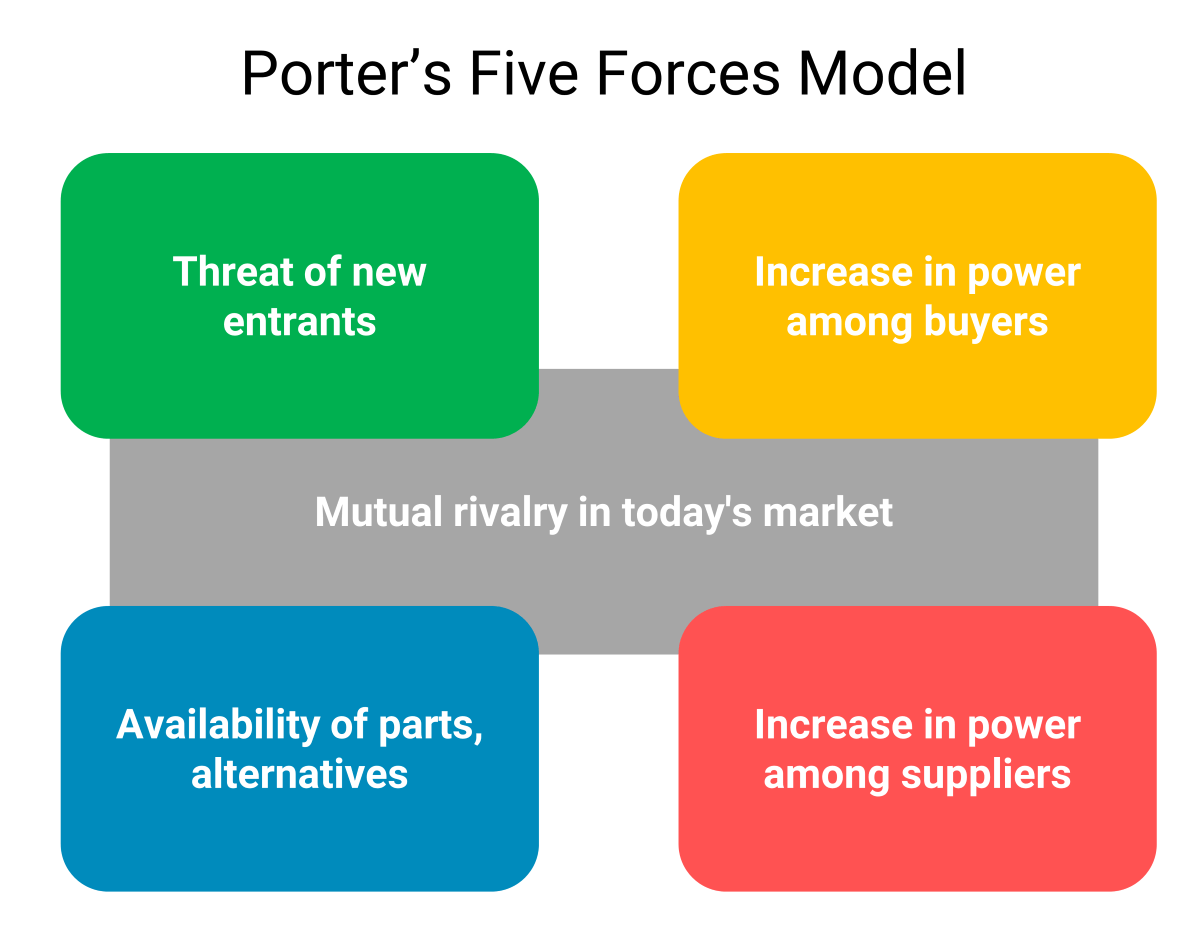 Figure 7: Michael Porter’s five forces model.
Figure 7: Michael Porter’s five forces model.
- Strategy. Porter: ‘The key question in any strategy is: how do I fight the competition?’ The essence of strategy, he says, is for management to choose a financially interesting position that it can rightfully claim.
- Business strategy model. Porter: ‘Business strategy is the model that ensures that the whole of the company is more than the sum of the parts of the business units.’ He is referring here to the synergy principle.
- Competitive strategies. Porter: ‘An organization can gain competitive advantage in three ways: produce products or services cheaper than the competition (cost leadership), provide unique products or services (differentiation), or concentrate on niches in the market (focus).’
- Experience and learning. Porter also pays attention in his work to the so-called learning curve and the “broader” experience curve that he affectionately calls “two cousins.” Some companies do enjoy certain cost advantages because of unique technology, access to superior raw materials, crucial distribution channels, competitively sourced inventory, or patents.
- Generic strategy. Porter: “Organizations must choose one of three generic competitive strategies. According to Porter, a combination of competitive strategies is out of the question. It leads to a so-called “stuck in the middle” scenario that offers little prospect of a profitable market position.
- Porter on strategic innovation. Porter argues that innovation is the central pivot of economic prosperity. New entrants to an industry can gain a sustainable competitive advantage by innovating, depending on the existing barriers to entry. Porter: ‘If all you’re trying to do is essentially the same thing as your rivals, then it’s unlikely that you’ll be very successful.’ In other words, copycat or copycat behavior in strategy formation is not helpful. New entrants will have to disrupt an industry with a unique proposition.
- Porter growth strategy. Porter: “The secret to growth and survival is a position that is less vulnerable to a frontal assault by opponents, established or otherwise, and less vulnerable to erosion by buyers, suppliers, and substitutes. Such a position, he says, can rely on many tactics: close relationships with favored customers, product differentiation (effective or psychological) through marketing, forward or backward integration, or technological leadership.
- Organizational Strategy Porter. One of Michael Porter’s most famous quotes on organizational strategy is about making choices: ‘You can’t be all things to all people. Strategy is about making choices, trade-offs; it’s about deliberately choosing to be different.’ In other words: with your organizational strategy you define an area in which you as a company want to be unique and distinctive.
- Positioning strategy. Porter: ‘Knowledge of strategy development and the underlying causes of competitive pressures provides the basis for a strategic action plan.’ They, he says, show the company’s critical strengths and weaknesses, guide the company’s positioning in the industry, make clear which strategic changes are most beneficial, and show industry developments that may be of interest, either as opportunities, or threats.
- Profitability. Porter: “The profitability of an industry is determined by its strongest competitive force or forces. In his so-called five forces model (Porter strategy model), new entrants, current competitors, suppliers and customers with bargaining power, and substitute providers compete for profit margins.
Source: Competitive Strategy, Michael Porter, 2011
Get advice on Porter’s theory and strategy
Want to learn more about Porter, market strategy and other strategic or operational issues? Passionned Group’s consultants use Porter’s management strategies as part of their consulting. Inquire about the possibilities and availability.
Strategy execution and the strategy implementation process
The term strategy execution may sound a little strange to the ears because of unintended associations, but “execution” means “simply” carrying out your strategy, or implementing your strategy.
Between strategy formulation and strategy execution there is usually a gap. In daily practice it is not so easy to implement your strategy, your business innovation your business plan or startup steadfastly and consistently. So, strategy execution should never be underestimated. There are even authors (such as Pijl, J. 2017) who argue that strategy completely coincides with execution: strategy = execution. According to him, strategy execution should then not be seen as a profession, discipline, or trick, but as a core competency.
Strategy execution
However, organizations tend to place that core competency with one person: the implementation manager. When it comes to implementing a new information system, such as ERP or ETL, that need not be a problem. But when implementing a completely new business strategy, it can be problematic.
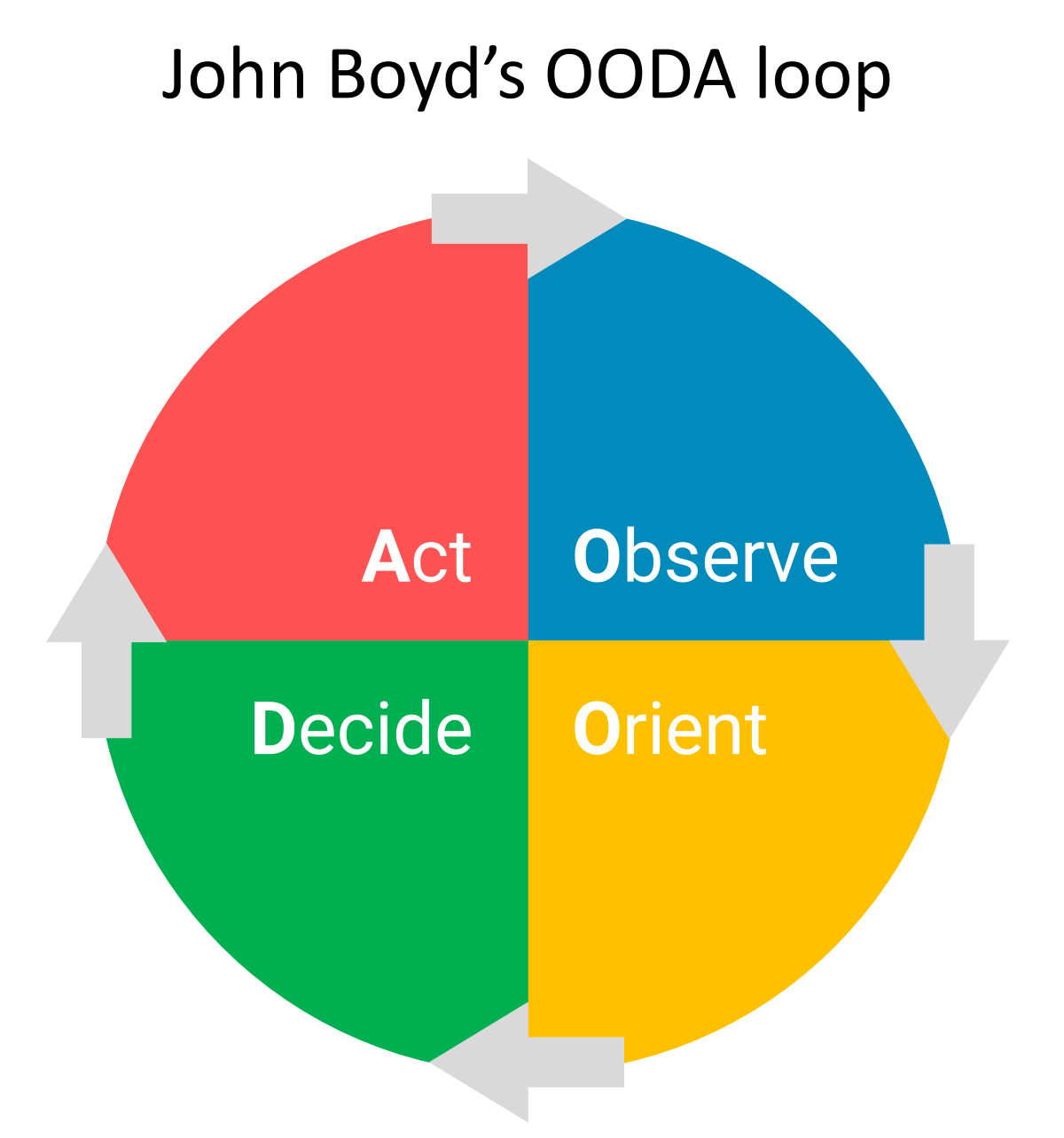 Figure 8: John Boyds’ OODA loop supports and accelerates strategy execution
Figure 8: John Boyds’ OODA loop supports and accelerates strategy execution
OODA loop supports strategy execution
John Boyds’ OODA loop, where you go through the strategy cycle by observing, orienting, deciding, and acting, can support your strategy execution and learning process. Your positioning strategy usually has a long duration. A new, interim orientation may very well lead to an adjustment of your strategy and positioning. In this way you build up a new mental representation with which you update your strategy and accelerate strategy execution (strategy acceleration).
Management books on corporate strategy
Entire libraries have been written about strategy, corporate strategy, and strategy execution. Mintzberg, strategy and Porter form a trinity that whole generations of managers have grown up with. We have selected four classics for you:

- Good Strategy Bad Strategy: This book guides you in the process of creating the right strategy for your company in order to achieve your goals. Check out the book here.
- Strategy Safari: a stimulating, unconventional book on strategy formation in which the authors evaluate ten important schools of thought in strategic management. View the Strategy Safari book here.
- Competitive Strategy: a classic with all the techniques managers need to analyze an industry or individual competitor and make important strategic decisions. Open the Competitive Strategy book.
- The Data Science Book: unique handbook on Artificial Intelligence, BI and Data Science. The author gives you a complete recipe and strategy to make your organization data-driven in 10 steps. Order ‘The Data Science Book’ here.
Business strategy and development support
Strategy management and strategy recalibration are regular topics during meetings with stakeholders such as shareholders, commissioners, analysts, customers, and press. In this way the board of directors or management collects valuable feedback on how the outside world views the strategic direction of the organization.
Passionned Group offers “business strategy support” as an approachable service. They regularly organize strategy sessions commissioned by clients for medium and large family businesses, government institutions such as larger municipalities, but also corporates.
Advice & strategy: various strategy options
Would you like to organize an inspiring strategy session in-company or on-site with external support from our strategy specialists? Or do you want direct strategic advice or insight in all available strategy options, please contact us and ask for some of our references.
About Passionned Group
 Passionned Group is the specialist in formulating, visualizing, and implementing smart business strategies. Our experienced and passionate strategy consultants help smaller and larger organizations (MKB+) to transform into an intelligent, data-driven organization. Every other year we organize the Dutch BI & Data Science Award™.
Passionned Group is the specialist in formulating, visualizing, and implementing smart business strategies. Our experienced and passionate strategy consultants help smaller and larger organizations (MKB+) to transform into an intelligent, data-driven organization. Every other year we organize the Dutch BI & Data Science Award™. 

 Figure 6: Business strategy model according to Ansoff
Figure 6: Business strategy model according to Ansoff


























